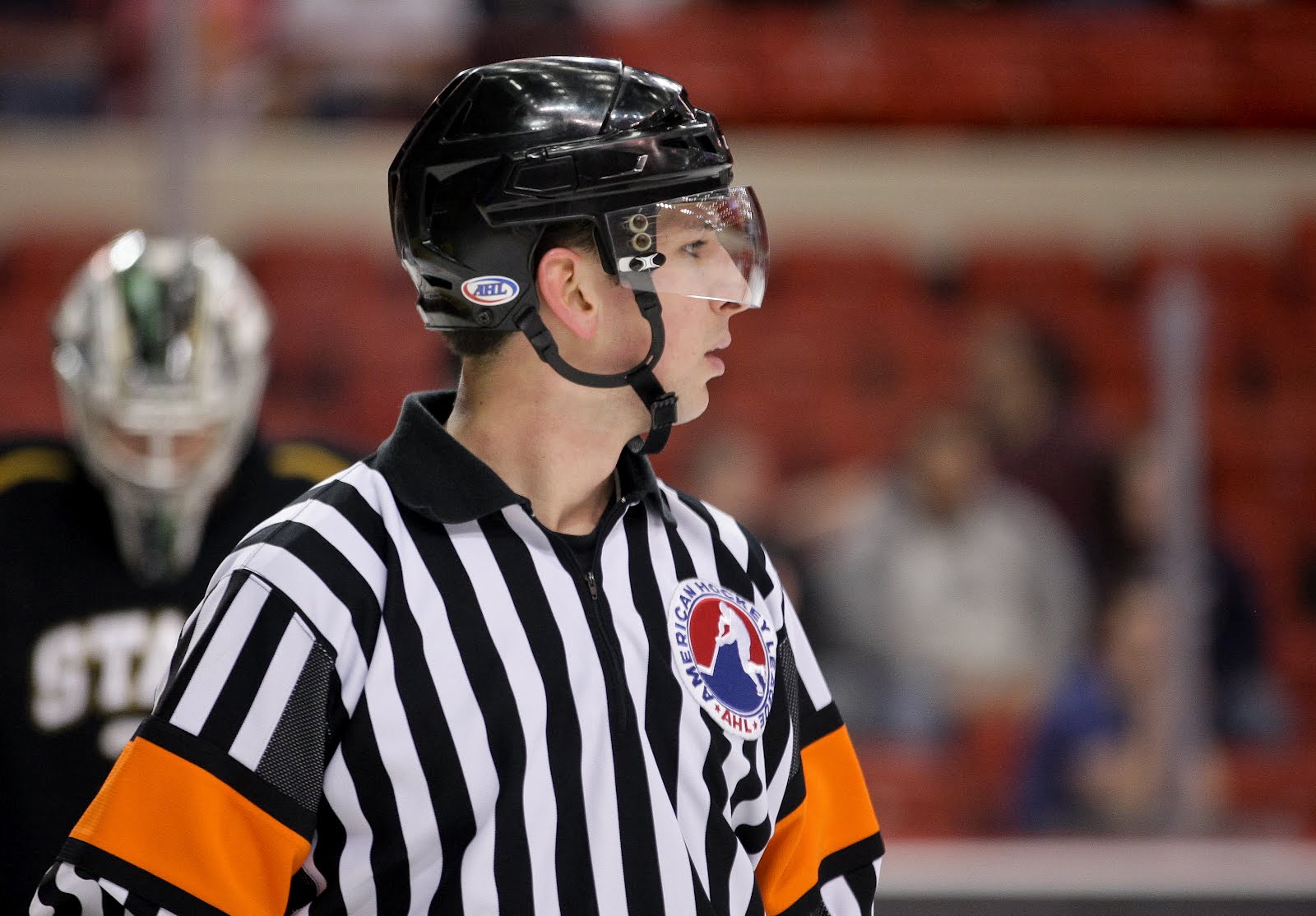As many of you who follow me on social media know, I’m a huge fan and advocate of the American Hockey League.
It’s not perfect, however, and my one real bugbear with the league is the officiating levels.
I don’t mean the standard of the officials, but the amount of times a game has just one referee.
This past Sunday (November 15) saw the AHL surpass the 200 game mark of the season.
To be precise, 202 games have been competed. What percentage of games do you think have had just three officials? Perhaps 10%? Maybe 15% at a push? Nope, not even close. A third of the games played this season (32.67% to be precise) have been assigned to a crew of just three officials.
This is no dig at the officials, who often have their hands full in a league where there is still more fighting and altercations on a regular basis between players than in the current NHL.
The league is doing a disservice to everyone involved with far too many games officiated in this manner.
Players
In what is supposed to be the premier league for developing players for the NHL, three man crews create several issues for players, especially the younger guys. Some play on the edge of what’s acceptable, knowing that one referee won’t be able to see everything, especially when a play quickly develops the other way. This can breed bad habits — players not being called for penalties they should be called for, and not preparing themselves for the scrutiny they’ll be under when that call-up comes. The template for learning should be as close to the one at the next level as possible.
The other, more serious issue is player safety.
There are teams that play a physical brand of hockey that stretch the boundaries of what is acceptable. When line brawls break out (these happen more than you might imagine), it’s hard enough for four officials to keep the peace and stop things from getting out of hand. An incident I wrote about earlier this season between Grand Rapids Griffins and Toronto Marlies emphasizes the point I’m trying to make, where Tyler Bertuzzi (renowned tough man in his junior days) intentionally went after Kasperi Kapanen (a non-combatant) and the latter was very lucky to come away unscathed after being punched and slew foot to the ice, with his team mates being held back by opposition and officials alike.
More can be found on this incident here.
Teams
Undoubtedly, the NHL teams want their AHL affiliates to be run in the same way as they are.
You can set-up your coaching, systems and the same way, and even arrange the best training and preparation for games, but when it comes to puck drop there is no control over what happens. I’m absolutely adamant in thinking that every NHL team would want a four man crew for the reason I’ve listed in the above play section. It’s a no brainer and surely something the two leagues are in communication with more than ever.
No one league or team has been hard done by in the way these crews have been assigned duties, although Central Division teams have been involved in the least (17 games). With the North involved for 21, Pacific 22 and Atlantic 23, there isn’t a huge disparity. It’s just certainly been more forthright in my mind as the Toronto Marlies have had three-man teams in six of their 15 games so far, but I’ve not the time to see how every team has fared.
Officials
In addition to being a developing ground for players, the American Hockey League is the place where officials earn their stripes in trying to progress to the NHL. The same applies to referees as it does to players in regards to preparing themselves for the step-up.
The template of a four man officiating crew and those duties should be the same. It must be incredibly frustrating for officials to be behind the play at times, unable to make the correct call and I would surmise making an “informed” guess when unsighted or too far back to see exactly what happened.
There is also the safety issue as I mentioned in the players section above. It applies to the safety of the officials as well — imagine trying to pull apart two guys who are going at one another hammer and tongs.
In general, it’s usually two referees who are trying to perform that task in the AHL while the linesman steers other players away and keep the calm.
Fans
Without fans there would be no game. Patrons pay good money to watch professional hockey and deserve full value for that, including a properly officiated game. It’s no exaggeration to say that missed or bad calls can determine the outcome of a game, especially close ones. With many AHL teams struggling to fill out their buildings, we don’t need to give the paying public another reason not to spend their money supporting their local team.
This really is such a simple fix. There has never been more money in the AHL than there is now, with more and more NHL franchises having a stake in the league by taking outright ownerships of their affiliate teams, part of which led to the latest realignment and Pacific Division for 2015-16.
The AHL have listed 38 referees and 167 linesman (yes, really) for action this season, so there really is no excuse for any game to be undermanned, financially or otherwise. With the schedule more bunched up than the NHL, with many more games played Friday-Sunday, it’s not beyond the wit of the league to organize this better. Use some of that money to finance travel and designate crews to cut down on the amount of distance travelled.
As recently as November 4, the American Hockey League announced a new four-year officiating development agreement with the National Hockey League which will continue to see the AHL serve as the top development league for the NHL’s referees through 2018-19.
Full details can be found here.
With this in mind, I’m hopeful this is an issue we won’t be talking about in seasons to come.


































